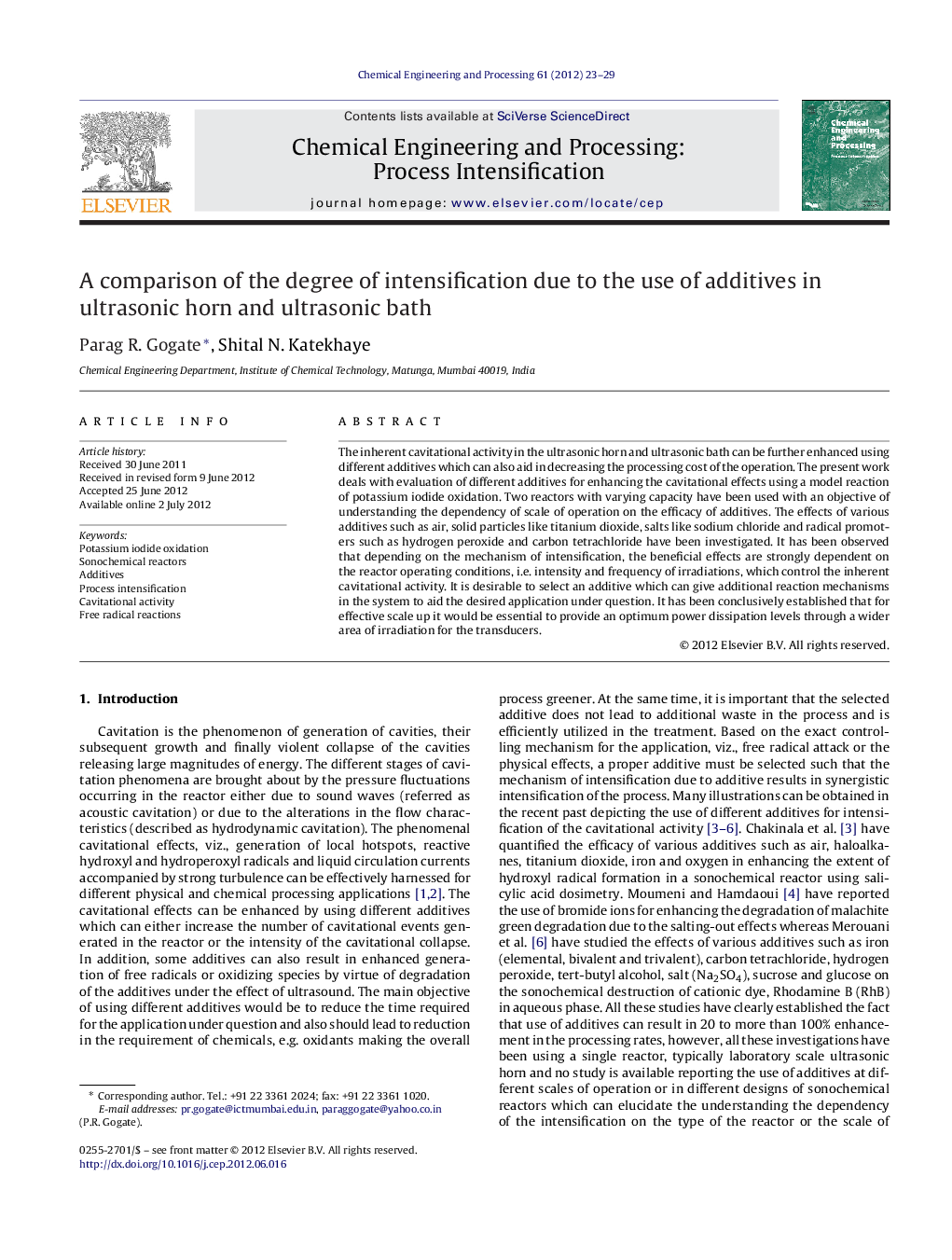| Article ID | Journal | Published Year | Pages | File Type |
|---|---|---|---|---|
| 686976 | Chemical Engineering and Processing: Process Intensification | 2012 | 7 Pages |
The inherent cavitational activity in the ultrasonic horn and ultrasonic bath can be further enhanced using different additives which can also aid in decreasing the processing cost of the operation. The present work deals with evaluation of different additives for enhancing the cavitational effects using a model reaction of potassium iodide oxidation. Two reactors with varying capacity have been used with an objective of understanding the dependency of scale of operation on the efficacy of additives. The effects of various additives such as air, solid particles like titanium dioxide, salts like sodium chloride and radical promoters such as hydrogen peroxide and carbon tetrachloride have been investigated. It has been observed that depending on the mechanism of intensification, the beneficial effects are strongly dependent on the reactor operating conditions, i.e. intensity and frequency of irradiations, which control the inherent cavitational activity. It is desirable to select an additive which can give additional reaction mechanisms in the system to aid the desired application under question. It has been conclusively established that for effective scale up it would be essential to provide an optimum power dissipation levels through a wider area of irradiation for the transducers.
► Evaluation of different additives for enhancing the cavitational effects. ► Intensification depends on the mechanism of expected intensification due to additive. ► Optimum power dissipation levels through a wider area beneficial. ► Select an additive which can give additional reaction mechanisms. ► Application of a true spatially sensitive cavitation measurement method would be of strong utility for scale-up.
